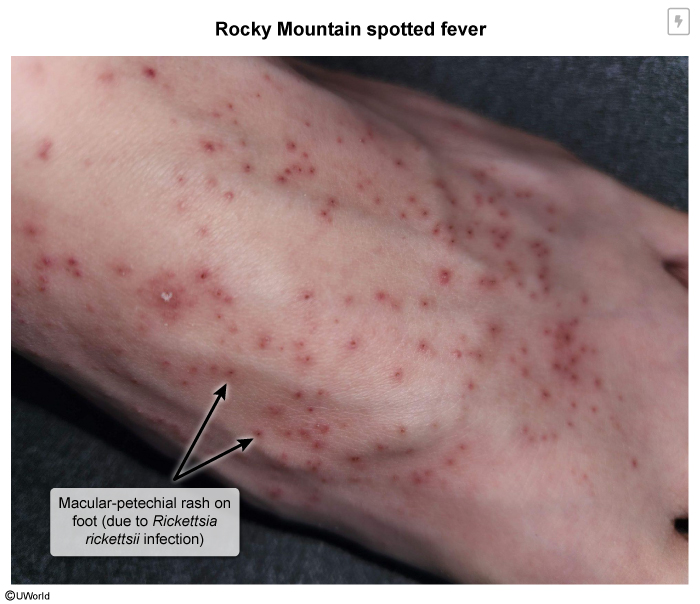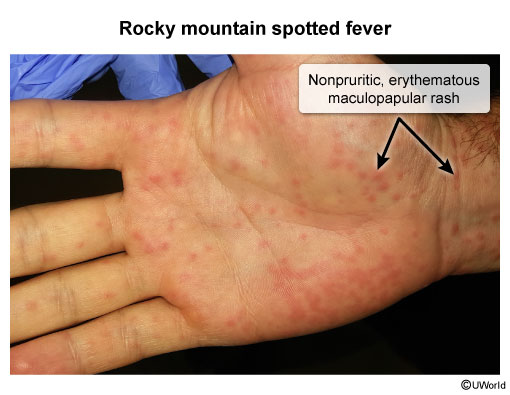Rocky Mountain Spotted Fever
Article Sections
Introduction
Rocky Mountain spotted fever (RMSF) is an uncommon tick-borne illness caused by the gram-negative, obligate intracellular bacterium Rickettsia rickettsii. Cases occur in North and Central America and portions of South America (eg, Bolivia, Argentina, Brazil, Colombia). The transmitting tick vector varies by region. Common infected species include Dermacentor variabilis (American dog tick), Dermacentor andersoni (Rocky Mountain wood tick), and Rhipicephalus sanguineus (common brown dog tick). R rickettsii attacks the vascular endothelium and can cause severe (fulminant) infections in as little as 5 days. Therefore, prompt recognition and initiation of antimicrobial treatment is required to reduce the risk for complications and death.
Pathophysiology
R rickettsii is transmitted from the salivary glands of infected ticks within 6-10 hours of attachment. The pathogen targets host vascular endothelial cells, entering the cells via endocytosis and using hemolysins to pierce the phagosome membrane. Once in the cytoplasm,
Continue Learning with UWorld
Get the full Rocky Mountain Spotted Fever article plus rich visuals, real-world cases, and in-depth insights from medical experts, all available through the UWorld Medical Library.
Images

